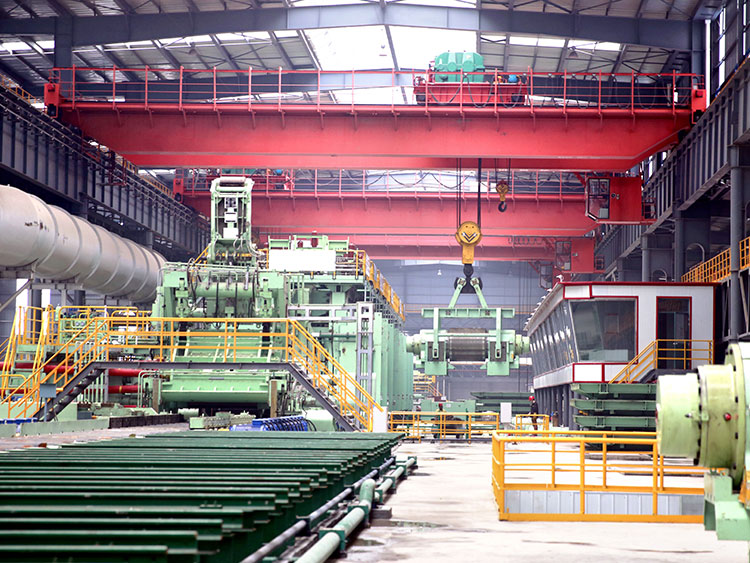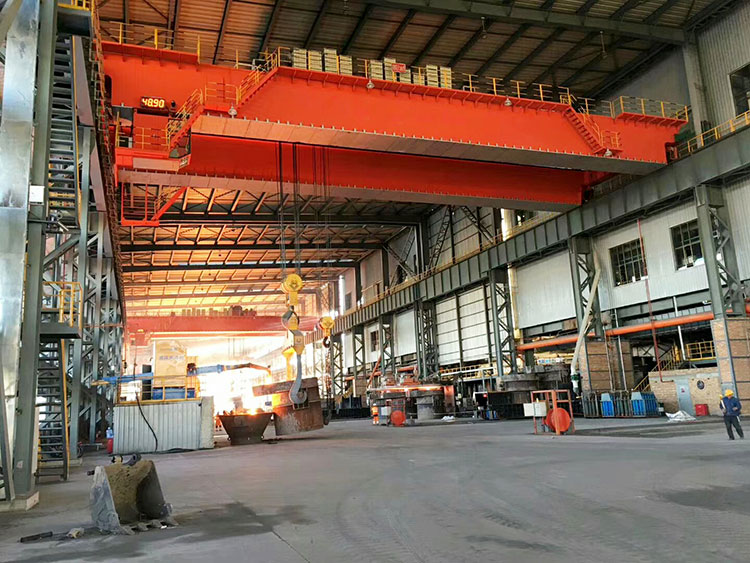In heavy lifting environments where 100-ton overhead cranes operate, safety is not just a regulatory requirement—it is a critical element of design and operational integrity. These cranes, often deployed in steel plants, shipyards, power stations, and industrial manufacturing facilities, handle massive loads that pose significant risks to equipment, personnel, and infrastructure. Therefore, safety components like interlocks and limit switches play an indispensable role in ensuring controlled and secure operations.
This article explores the role of safety interlocks and limit switches in the design of 100 ton overhead cranes, highlighting their importance, types, working mechanisms, and integration into modern crane systems.

Understanding the Basics
What is a Safety Interlock?
A safety interlock is a device or control mechanism that prevents a machine from operating under unsafe conditions. In crane applications, interlocks are used to block or enable movements based on pre-defined conditions, ensuring that certain operations only occur when it is safe to do so.
What is a Limit Switch?
A limit switch is an electromechanical device that detects the presence or absence of an object, or monitors and controls movement limits. In a crane, limit switches are used to restrict the movement of the hook, trolley, or bridge to avoid collisions, over-travel, or load instability.
Importance of Safety Interlocks and Limit Switches in 100 Ton Cranes
In a 100-ton double girder overhead bridge crane, the stakes are high. A small error can cause catastrophic failure. That’s why interlocks and limit switches are crucial in:
-
Preventing over-travel of the hook and trolley
-
Avoiding collision between cranes or trolleys
-
Ensuring safe load positioning and lifting
-
Protecting structural integrity of crane components
-
Complying with safety regulations (e.g., OSHA, ANSI/ASME, IEC)
Without these safeguards, the risk of mechanical failure, falling loads, or injury increases dramatically.

Key Applications of Limit Switches in 100 Ton Overhead Cranes
1. Hoist Limit Switches (Upper & Lower)
These switches are among the most critical in an overhead crane system. They are installed to stop the hoisting mechanism when the hook reaches the highest or lowest allowable point.
-
Upper Limit Switch: Prevents the hook from crashing into the drum or block.
-
Lower Limit Switch: Stops the hook from being over-lowered, which can cause rope slack or unspooling.
Modern cranes may use rotary cam limit switches or proximity sensors for more precise control.
2. Travel Limit Switches (Trolley and Bridge)
These switches monitor the trolley and bridge travel to avoid end-of-run collisions. They may include:
-
End limit switches: Located at the ends of bridge or trolley rails to prevent overrun.
-
Over-speed limit switches: Detect excessive travel speed and activate a shutdown or braking mechanism.
These switches are often mounted on the crane girder or runway beams and integrated with frequency inverters or PLCs for advanced control.
3. Load Limit Switch (Overload Protection)
This switch ensures that the crane does not lift a load exceeding its rated capacity. It can shut off the hoisting motor or activate alarms if the load is too heavy.
-
Load cells and strain gauge sensors are increasingly used to enhance the accuracy of load measurement.
-
Overload switches help prevent mechanical stress and cable damage and protect the crane’s structural elements.
Role of Safety Interlocks in Crane Design
Safety interlocks in 100-ton overhead cranes perform a wider variety of logical and conditional safety operations. Here are some common uses:
1. Hoist and Travel Interlock
Prevents the crane from moving (traveling) if the hoist is engaged in lifting or lowering. This avoids pendulum motion of the load and minimizes risk of uncontrolled movement.
2. Dual Hoist Interlocks
In cranes equipped with two hoists (main and auxiliary), interlocks can prevent simultaneous use unless allowed by design. This is vital in tandem lifting scenarios to prevent load imbalance.
3. Cabin Door Interlock
Prevents crane operation unless the operator cabin door is closed. This protects the operator and ensures the overhead travelling crane is only operated under secure conditions.
4. Maintenance Interlocks
Disables crane operation during maintenance. These interlocks may include lockout/tagout systems, electrical disconnects, or PLC-controlled maintenance modes.
Smart Integration and Control Systems
With advancements in automation and industrial control systems, safety interlocks and limit switches are no longer standalone mechanical elements. Today’s 100-ton overhead cranes often feature:
-
Programmable Logic Controllers (PLCs): Which monitor limit switch status and interlock conditions in real-time.
-
HMI (Human Machine Interface): For monitoring system alerts, diagnostics, and maintenance status.
-
Remote monitoring systems: Transmit switch status data for predictive maintenance and fault analysis.
The integration of safety devices into a smart control system significantly improves operational safety and crane uptime.
Best Practices in Designing Limit Switches and Interlocks
1. Redundancy
Critical safety functions, such as upper limit stop, should be backed with redundant switches. For instance, a backup mechanical limit switch or an emergency hoist cut-off relay.
2. Proper Placement
Limit switches must be mounted in precise positions. Misalignment can result in false trips or failure to trip, both of which can be hazardous.
3. Environmental Protection
Switches should be enclosed in IP65-rated (or higher) housings to protect against dust, moisture, and corrosion—especially in steel plants or marine environments.
4. Routine Inspection and Testing
Regular testing of switches and interlocks is vital. This should be part of the crane’s preventive maintenance schedule and documented accordingly.
5. Failsafe Design
Interlocks and limit switches should default to a safe condition. For instance, if a wire breaks or power is lost, the switch should stop the motion rather than allow it to continue.
Regulatory and Safety Compliance
When designing a 100-ton crane, adherence to international safety standards is mandatory. These include:
-
ASME B30.2 – Overhead and Gantry Cranes
-
EN ISO 13849 – Safety of machinery (functional safety of control systems)
-
IEC 60204-32 – Electrical equipment of hoisting machines
-
OSHA 1910.179 – Safety standards for overhead and gantry cranes
These standards emphasize the need for robust, tested, and reliable interlocking and limiting systems to protect people and equipment.
Conclusion
In the design of 100-ton overhead cranes, safety interlocks and limit switches are far more than optional features—they are vital components that uphold the structural and operational integrity of the crane system. They prevent overloads, avoid collisions, and ensure lifting is performed within safe boundaries. By integrating these systems into advanced crane controls and adhering to best design and maintenance practices, crane operators and manufacturers can significantly reduce the risk of accidents and extend equipment life.
Ultimately, in an environment where loads weigh hundreds of tons, safety is not just built—it’s engineered, verified, and continuously monitored.
